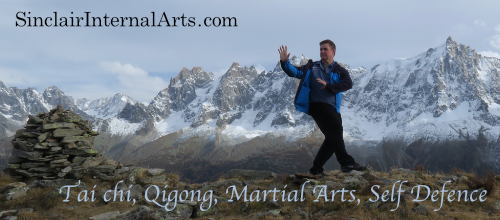Elements
There are many who think of tai chi as a slow moving dance, or a moving meditation, or “old people sneaking up on trees.” These people have likely only seen the art’s characteristic slow moving routine, called a “form” (Chinese: 套路; tàolù). But there is much more to the art than simply learning the “tai chi moves.”
Basic exercises: While many schools start teaching the form to beginners on the first day, there are several types of basic exercises designed to teach flexibility, stable stances, agility, proper arm movements, integration of body movements, balance, etc.
Internal Energy Training (“Neigong” or “Qigong”) (“internal skills” often called “qigong” (say “chee gong”)
The refinement of posture, breath, relaxation, visualization, subtle awareness, and internal energy. (note: the term “energy” has a broad and complex definition, and encompasses many subtle mental and physiological processes and characteristics.
Forms / Routines (套路; tàolù):
The most recognizable element of tai chi is the slow-moving routine that forms the primary context for cultivating the subtle and profound benefits of the art.
Pushing hands (推手; Tuishou:
A two-person exercise which develops profound sensitivity, awareness, internal power, subtle neutralizing skills, and the ability to use softness to overcome brute force.
Martial Applications
While forms teach the proper structure and movement, and pushing hands teaches the correct method of engaging an opponent, martial applications teach the actual techniques that can result from proper structure and method. These techniques can include joint control, pressure point manipulation, striking, throws, and more.
Two-person routines
Some styles include sophisticated choreographed routines performed with a partner.
Advanced Self Defence training
Tai chi does not typically involve sparring, as it is regularly perceived. But there are many advanced training methods that vary from school to school.
Weapons
All of the above elements can be extended to include
Philosophy and esoterica
The art is not merely physical. It is based on an ancient set of philosophies. But mostly, it teaches the student to seek the truth in his or her own way.
